Not Losing Weight in Stomach, Thighs, or Face?
If you’re experiencing weight loss, you may wonder why you lose fat in some areas but not others.
Two things are unique to you:
- Your bone structure.
- The way your body burns fat in specific areas.
Where does fat disappear from first?
When you lose fat, do you find it disappears from where you want to stay big?
Fat tissue is made of adipocytes (fat cells) whose sole job is to store energy. Body fat distribution differs from person to person. There are two types of fat storage:
- Visceral – surrounding our internal organs.
- Subcutaneous – beneath the skin – about 80% of all body fat is this type.
Why am I losing fat from my legs but not my stomach?
For most people, fat acts like the layers of an onion. There is no ‘spot reduction’ – it comes off from the whole body layer by layer.
It tends to go from the most recent place it appeared. If your tummy starts gaining first, this will be the last place for the fat to disappear.
It’s more likely that overall body fat is decreasing, but it’s simply more noticeable in certain areas.
Stomach fat can be the most difficult area to slim down as high levels of the stress hormone cortisol can lead to fat storage in the abdominal area.
- A man can get thin in the face and still have a small ‘spare tire’ around his waist.
- A woman may complain of a smaller bust, yet her hip size has dropped only a tiny amount.
Typical fat gain areas
- Women – around the buttocks and thighs.
- Men – around the abdomen.
These are the predominant patterns – but both ‘apple’ and ‘pear-shaped’ distributions can be found in either gender.
| Knee | Fat often builds up on the inside region of the knees in women. |
| Upper Arm | Common in women, fat build-up can occur in the middle to the upper area of the upper arm (triceps area.) |
| Abdomen | Fat storage between the thighs is common in women – but also occurs in men. |
| Inner Thigh | Fat storage between the thighs is common in women – but also occurs in men. It is more noticeable in women due to the width of the pelvis, that in turn influences the position of the thigh (femur). |
| Outer Thigh | Fat storage between the thighs is common in women – but also occurs in men. It is more noticeable in women due to the pelvis’s width, which in turn influences the position of the thigh (femur). |
| Buttocks | Without fat here – sitting would be quite uncomfortable. Fat is held in place by the gluteal fold. If significant fat is lost from the buttock, only appropriate training can prevent the buttock from sagging down against the thigh. |
| Lower Back | This fat concentration often merges with the buttock area. |
| Chest | Breast tissue comprises the mammary gland (one’s ‘endowment’) surrounded by fat. Men also have atrophied glands and fat in this area. Both sexes gain fat in this area. In men, this can sometimes be mistaken for gynecomastia – a condition that includes not only fat build-up but growth in gland tissue. |
Why do I lose weight but look the same?

- Obese men tend to lose more visceral (internal) fat, while obese women lose more subcutaneous fat.
- Exercise seems to result in more subcutaneous fat loss.
- Diet alone produces more visceral fat loss (and less surface fat loss).
This explains how you can lose weight – but not necessarily have any radical change in appearance.
How to improve your body composition
There is little you can do to influence specific subcutaneous fat distribution.
- Switch up your diet
If you’ve been in a strict plan for a while – it’s time to break the plateau. - Maintain resistance training
It’s very important to do bodyweight exercises while on a calorie deficit. This keeps the body maintaining its muscular definition. - Try the body recomposition calculator
It’s built specifically to help you lose fat and gain muscle at the same time.
What will NOT work
- Vigorously exercising a specific body part will not influence local fat in that area.
- High-repetition (e.g., 20-30 reps) weight training will not lead to greater fat loss.
Stay committed to your training and nutrition – and don’t be dissuaded by the commercials and images that show perfectly proportioned clones.
If you are a woman over 50, please try the menopause macro calculator – it takes into account changes that occur during this season of life.
Understand how your body works, and set achievable goals accordingly.


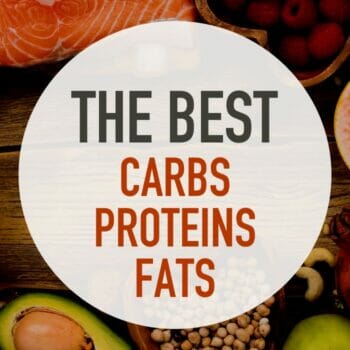 Top 15 Healthy Carb, Protein, and Fat Rich Foods
Top 15 Healthy Carb, Protein, and Fat Rich Foods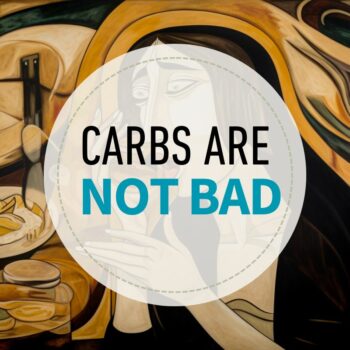 Carbs are Not Bad – and Will Not Prevent Weight Loss
Carbs are Not Bad – and Will Not Prevent Weight Loss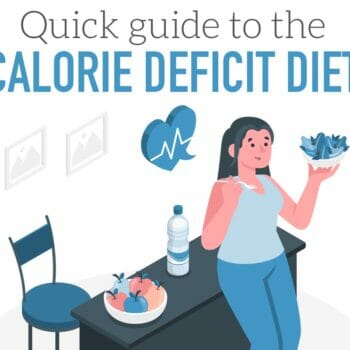 Calorie Deficit Diet
Calorie Deficit Diet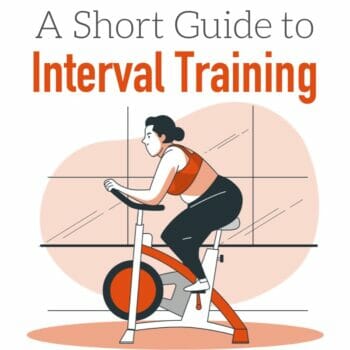 A Short Guide To High-Intensity Interval Training (HIIT)
A Short Guide To High-Intensity Interval Training (HIIT)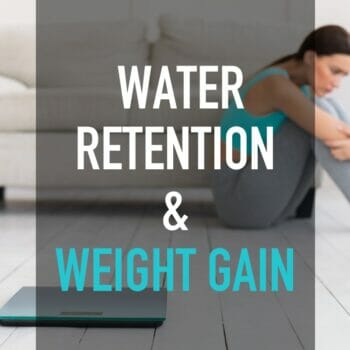 What Causes Water Weight, Water Retention, and Weight Fluctuation?
What Causes Water Weight, Water Retention, and Weight Fluctuation?